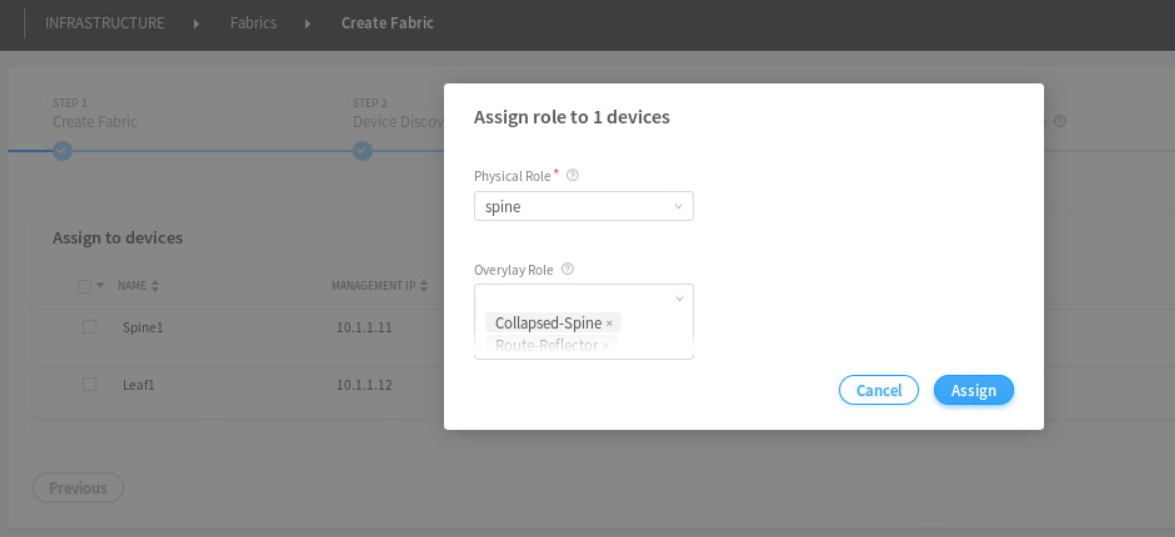Collapsed Spine Architecture
Starting from Release 2011, Contrail Networking supports collapsed spine, which is an architecture, in which there is no defined leaf layer. In collapsed spine architecture, the Layer 3 IP-based underlay and the EVPN-VXLAN overlay, which are usually run on the leaf, are built on the spine switches. These spine devices also act as the border gateway.
Collapsed spine architecture is supported on the following devices running Junos OS release 20.2R2 or later:
-
QFX5120-32C—Can function as an L2 or L3 gateway
-
QFX10K—Can function as L2, L3, or DC gateway
Supported QFX10K devices:
-
QFX10002-72Q/36Q/60C
-
QFX10002-36Q
-
QFX10002-60C
-
QFX10008
-
QFX10016
-
Collapsed spine topology is supported in both greenfield and
brownfield deployments. To configure a device as collapsed spine,
you need to assign the physical role spine and overlay
role Collapsed-Spine.

Benefits
Collapsed spine architecture is useful for both enterprises and service providers that
-
want to move to an IP fabric-based architecture with an EVPN-VXLAN overlay
-
want to add two or more spine switches to ensure adequate bandwidth during maintenance window or to function as a backup in case of a spine failure.
-
have small datacenters with mostly northbound and southbound traffic movement
-
want to extend Layer 2 traffic across data centers.
-
have multi-vendor legacy ToR switches that do not support EVPN-VXLAN.
